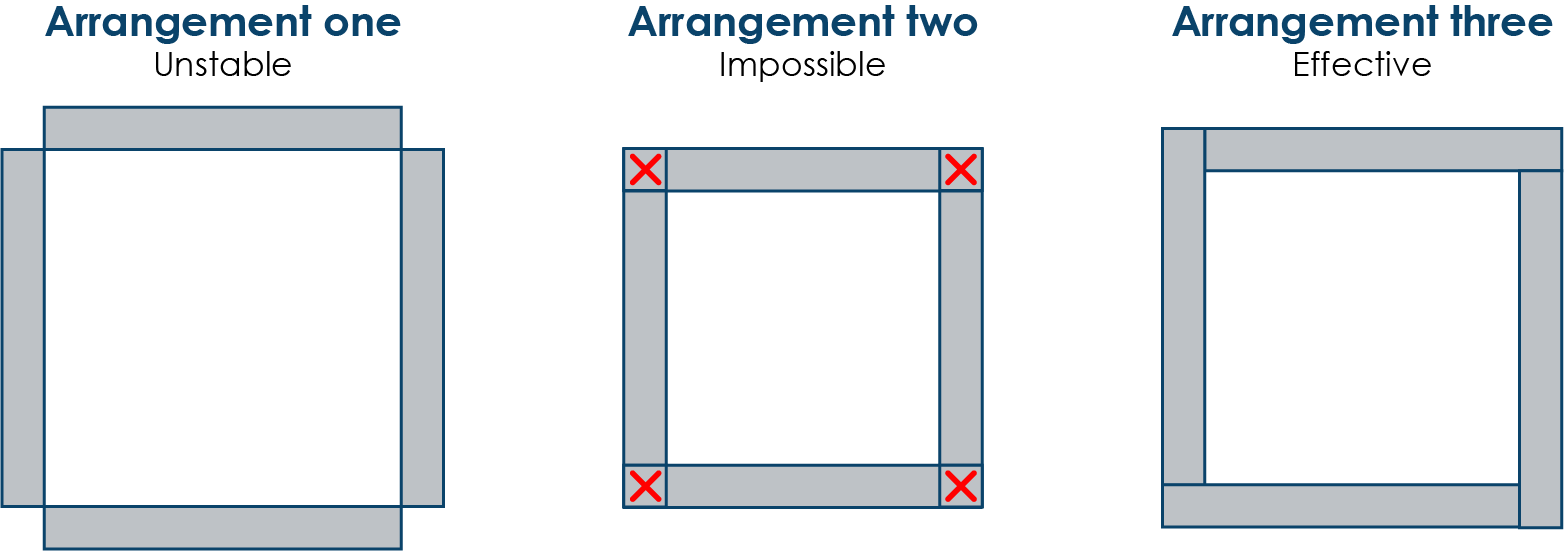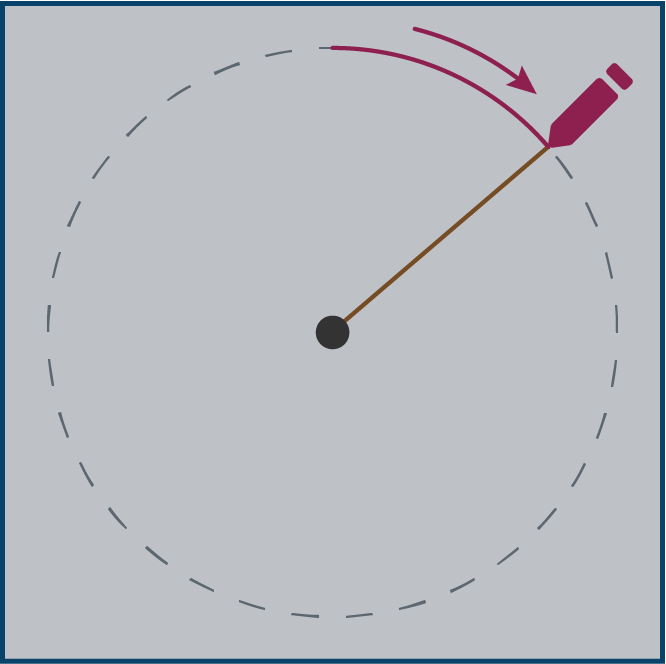Have you ever thought about the quality of the air in your classroom? What could you do to improve it? Maths teachers rarely get the opportunity to build things with students so when we heard about the Corsi-Rosenthal box, a do-it-yourself (DIY) solution for classroom air filtration invented in response to the COVID-19 pandemic, we couldn’t wait to roll up our sleeves, don our metaphorical overalls and find out what all the fuss was about.
One of the biggest questions at the beginning of the COVID-19 pandemic concerned how it was transmitted from person to person, and importantly, what could be done to limit this spread – particularly in environments where large numbers of people congregated, such as schools. It was established early on that a significant vector for transmission of the virus was through droplets exhaled by infected individuals or expelled through coughing. In an attempt to limit the spread as much as possible, advice included actions such as encouraging people with symptoms of infection and/or with a positive COVID test to isolate, regular handwashing, and cleaning and disinfection of surfaces where droplets may settle (e.g.,1). These activities are relatively simple and easy for individuals to take responsibility for, but another key safety recommendation emerged relating to ventilation,2 and the importance of ensuring that COVID-19 particles were not allowed to build up within indoor spaces like a classroom. This element of infection control is best tackled through more structural action, with solutions broadly limited to three main options:
- using mechanical ventilation systems where available (for example, fans or Heating, Ventilation and Air Conditioning – HVAC);
- opening doors and windows; and
- using portable air filtration devices such as high-efficiency particulate absorbing (HEPA) filters.3
Unfortunately, in many educational settings, buildings have not been designed with inbuilt mechanical ventilation systems so this has not been seen as a viable option and fans may only move air around within a room. Opening doors and windows on the other hand, while simple and cost effective, may be limited in classrooms, and may leave teachers to deal with temperature change issues. The third option, portable ventilation devices (transportable units that can be plugged in as needed in classrooms), has been shown to have real potential in preventing transmission of COVID-19. While these devices, such as HEPA filters, have been shown to be effective (e.g.,4) both cost per unit and availability may make securing sufficient devices for a school somewhat problematic.
However, a remarkable and innovative DIY solution was developed early on in the pandemic: step forward the Corsi-Rosenthal box, invented by Dr Richard Corsi and Jim Rosenthal.5 This simple homemade filtration device that teachers and students can build using easily available components significantly helps improve the safety of their classrooms (e.g.,6).
Armed with a pile of components, bags of enthusiasm, and an exciting quantity of duct tape, we decided to have a go at building our own while considering the mathematics exposed by the construction.
To build a Corsi-Rosenthal box we needed the following items:
| Material |
What we used |
Cost |
| A portable electric box fan |
Vent-Axia 14 Inch Box Fan |
£59.88 |
| 4 rectangular MERV-13 (Minimum Efficiency Rating Value) filters |
Filtrete 20x20x1 Air Filter MPR 1900 MERV 13, Healthy Living Ultimate Allergen, 4-Pack |
£115.91 |
| Extra cardboard |
The boxes from the fan and the filters |
Free! |
| Duct tape |
Two rolls of Duck Tape 4.8cm x 13.7m in plain white |
£8 |
| Total: £183.79 |
We used the four filters to build the walls of a cube and added a square base at the bottom. We then secured the fan on the top with an additional cardboard mount and oodles of duct tape to seal the various edges . The fan was oriented to blow air out of the top of the box, so that unfiltered, virus-particle-laden air would be sucked in through the filters and expelled up and away to circulate around the room.
A video explanation of how to build the device explained by Dr Richard Corsi (of Corsi-Rosenthal) can be found below.
And so to some mathematics: an interesting early issue concerned constructing a cuboid from the four filters – diagrammatically a simple job of aligning edges such that the filters are oriented to allow air to be drawn into the box through the sides and out of the fan at the top. Unlike a mathematically perfect geometric cuboid however, the edges of our filters have a confounding, real-world factor – thickness! For our 3D shape, were we to align the edges of the inner faces of the filters together, we would lose stability, and create a “cut-out” effect in the corners of the box. Similarly, it’s not physically possible to align the corners of the outer faces without having to cut away parts of the filters and risking reducing the effectiveness. A practical solution (and one that, despite our collective maths degrees, two decades of maths teaching, and plethora of DIY and arts and crafts experiences, we did not manage to line up properly on the first attempt) was to align the outer edge of one filter with the inner edge of the other in a right-handed (or left-handed) pattern. We could ask the questions: What difference might this make to the overall dimensions of the box? How do we work out the size of the card square needed for the base? And which dimensions of the filters should we use to do so?

The next mathematical hurdle concerned the fan mount. Our fan was roughly a square shape, but with a circular projection for the fan housing. In order to make a mount to secure the fan to the top of the box we needed to make a large circular cut-out in a square of cardboard. Due to the shape and construction of the fan it was not possible to simply draw round the fan housing – our next interesting mathematical problem was: How to draw it? The solution we settled on involved a piece of string and a pencil, using an often-underexplored definition of a circle as a shape where all the points are equidistant from the centre. Using the string to establish the radius of the circle, it was a reasonably straightforward task to use one hand to pin the string at the centre of the card, and the other to hold a pen at the end of the stretched string and trace the circumference of a circle ready to be cut – a neat solution that would be very familiar to the engineers of many historical civilisations.

Once cut, we secured the mount on top of the box using duct tape, ensuring that the outer edges were sealed, and then lowered the fan into position. What followed was perhaps the most complicated part of the build, taping down and sealing the curved edges of the fan using straight pieces of duct tape. Creating curves from straight lines is a familiar idea common in many early explorations of geometry in the classroom, and through a bit of trial and error we managed to find an approach that resulted in a relatively neat seal using short overlapping lengths of tape applied at rough tangents to the fan.
Finally, it was time to plug in our finished Corsi-Rosenthal box and admire our handiwork.
Lucy, of course, could not stop there and added some finishing flourishes, decorating the box using acrylic paint to make it both functional and beautiful.
In total, our Corsi-Rosenthal box cost around £185 and took about two hours to put together. While much depends on construction, a four-filter Corsi-Rosenthal box constructed using the same components as ours can, on its highest setting, filter up to around 900 m3 of air every hour. This is a metric known as the “clean air delivery rate” (CADR). In a classroom with a 55 m2 floor area and 2.7 m high ceilings, with a volume therefore of approximately 150 m3, this equates to six air changes per hour. It is possible to bring the overall cost down by using different (less expensive) components, but this may mean that the finished box performs very differently.
A recent study7 suggests that four air changes per hour significantly reduces exposure risk in simulations, with some recommendations8 suggesting that a target of at least six air changes per hour is desirable. Combined with additional methods of ventilation, a single Corsi-Rosenthal box could therefore contribute significantly to mitigating COVID-19 risk in classrooms. We have provided a short evidence summary on Corsi-Rosenthal boxes, which we hope you can use to inform discussions in your school about the benefits of building these ingenious devices.
Have you made a Corsi-Rosenthal box yourself? Have you made them in your school as part of a student project? We would love to hear about your experiences and see the finished boxes in action. Share your images with @Cambridgemaths on Twitter.
Something to try
KS1:
Using four rectangular building blocks explore how many different ways there are to make a square.
KS2:
Provide students with a tray of objects including string, card, pins, adhesive putty, etc. Ask students to find as many different ways to draw a circle as they can.
KS3:
Explore how much it would cost to build a Corsi-Rosenthal box for every classroom in the school; what assumptions need to be made? What other costs might be prevented in the short, medium and long term? What extra resources are needed?
KS4:
Calculate the areas and volumes of elements of the Corsi-Rosenthal box. Research information related to the impacts of ventilation and filtration for rooms of different sizes and ask students to design some recommendations for the school.
KS5:
Explore the mechanics of the device. How much air can be filtered by the box in a given time? How long might it take to filter the air in a whole classroom? Explore the assumptions and considerations that might impact the effectiveness; e.g., placement, quality of assembly, number of people in a classroom. Consider published statistics related to air filtration and explore measures such as Clean Air Delivery Rate.
References:
- World Health Organisation. (2020, March). Getting your workplace ready for COVID-19.
- The Lancet COVID-19 Commission Task Force on Safe Work, Safe School, and Safe Travel. (2021, April). Designing infectious disease resilience into school buildings through improvements to ventilation and air cleaning. The Lancet COVID-19 Commission.
- California Department of Public Health. (2022, February 10). COVID-19 and improving indoor air quality in schools.
- Lee, J. H., Rounds, M., McGain, F., Schofield, R., Skidmore, G., Wadlow, I., Kevin, K., Stevens, A., Marshall, C., Irving, L., Kainer, M., Buising, K., & Monty, J. (2022). Effectiveness of portable air filtration on reducing indoor aerosol transmission: Preclinical observational trials. Journal of Hospital Infection, 119, 163–169.
- Rosenthal, J. (2021, July 24). IAQ research-practice in action: The Corsi/Rosenthal box air cleaner. Tex-Air Filters.
- Yorio, K. (2022, February 4). Corsi-Rosenthal boxes help clear the air at schools across the country. School Library Journal.
- Coyle, J. P., Derk, R. C., Lindsley, W. G., Blachere, F. M., Boots, T., Lemons, A. R., Martin Jr, S. B., Mead, K. R., Fotta, S. A., Reynolds, J. S., McKinney, W. G., Sinsel, E. W., Beezhold, D. H., & Noti, J. D. (2021). Efficacy of ventilation, HEPA air cleaners, universal masking, and physical distancing for reducing exposure to simulated exhaled aerosols in a meeting room. Viruses, 13(12), 2536.
- Peters, T. M., Rabidoux, D., Stanier, C. O., & Anthony, T. R. (2022). Assessment of university classroom ventilation during the COVID-19 pandemic. Journal of Occupational and Environmental Hygiene, 19(5), 295–301.
Join the conversation: You can tweet us @CambridgeMaths or comment below.